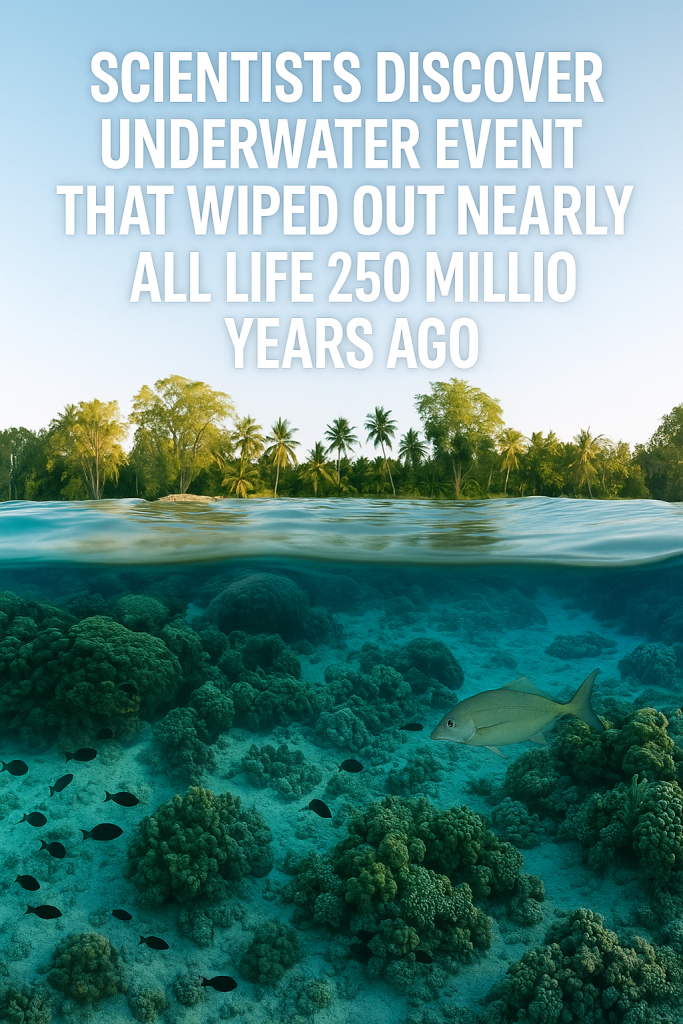In a groundbreaking discovery, scientists have revealed compelling new evidence pinpointing a massive underwater event as the primary trigger for the Great Permian Extinction, the most devastating mass extinction in Earth’s history that occurred approximately 250 million years ago. This ancient catastrophe wiped out nearly 90% of marine species and 70% of terrestrial vertebrates, reshaping the trajectory of life on the planet.
Recent research conducted by an international team of geologists and paleontologists has uncovered detailed signs of a colossal oceanic disaster that aligns with the timing of the end-Permian extinction. By analyzing underwater sediment cores and fossil records from multiple global sites, the scientists have revealed evidence of a dramatic series of events under the sea, including massive volcanic eruptions, sudden shifts in ocean chemistry, and severe oceanic anoxia (oxygen depletion).
“Our findings suggest that the oceans were the epicenter of a chain reaction that devastated life on a global scale,” the lead researcher explained. The study indicates that giant pulses of carbon dioxide and methane were released into the ocean and atmosphere, likely resulting from extensive volcanic activity along ancient seafloor rift zones. This caused rapid warming, ocean acidification, and a collapse of marine ecosystems.
One of the key discoveries was the identification of a distinctive and widespread layer of deposits rich in volcanic ash and toxic elements in the ocean floor. These deposits coincide with an abrupt disappearance of diverse marine species, including coral reefs and many types of plankton that formed the base of the oceanic food chain. The researchers also detected anomalously high levels of mercury—commonly linked to volcanic activity—further supporting the theory of massive underwater eruptions.
The study sheds new light on how interconnected Earth’s systems were—and still are—during moments of planetary crisis. While previous theories attributed the Permian extinction mainly to terrestrial volcanic activity and climate change, this groundbreaking underwater perspective emphasizes how ocean dynamics played a crucial role in amplifying the environmental collapse.
The implications of this discovery are profound. It not only helps to solve a long-standing scientific mystery about why life nearly vanished on Earth at the end of the Permian Period but also provides a sobering reminder of how vulnerable marine ecosystems can be to rapid environmental upheaval. The cascading effects triggered by underwater volcanic events caused the oceans to turn from cradles of life into zones of widespread death.
The end-Permian extinction, often called “The Great Dying,” represents the greatest loss of biodiversity ever recorded, and it took millions of years for ecosystems to recover fully. Studying such past events equips scientists with vital insights into our planet’s resilience and vulnerability—knowledge that is increasingly relevant today amid rising concerns about human-induced ocean acidification and climate change.
As research continues, investigators plan to explore additional deep-sea archives and apply cutting-edge technologies to better understand the scale and mechanics of this underwater catastrophe. This discovery marks a milestone in paleontology and Earth sciences, opening new avenues for exploring how dynamic ocean processes have historically shaped life’s fate on our planet.



